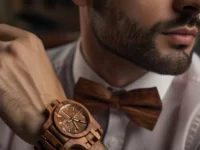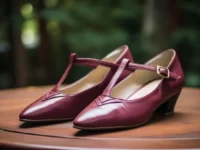Randrana, Taly or braid, this is the name that Malagasy people give to this trendy hairstyle that is all the rage. If for Westerners, this hairstyle is synonymous with summer vacations, or relaxation at the sea. For the Malagasy, each braid has its meaning. It can determine the ethnic origin of the person.
This hairstyle consists in entwining various strands of hair on the same thread. In general, it is the coastal women who wear this kind of hairstyle, but from time to time even women coming from the highlands also wear their hair in this way. They are called "Difisesy", "Randra-madinika" or even "Tana-Ivoho". Each braid also has its own particularity and meaning such as the marital status of the woman or whether she is in mourning.
The BARA braid
The TSIMIJIHIBASY is one of the hairstyles of the ethnic group BARA. This one looks like a cap leading to the forehead of the woman. It is specific to the region of Isalo and Ihorombe
This hairstyle consists in dividing the hair in two equal parts, roll the hair into a ball to cover the ears.
Braiding hair is an opportunity for Malagasy women to discuss and giggle among themselves.
During festivities, hairstyles are completely different from those of the daily life in the south of Madagascar and even in the whole region of Madagascar.
But the TSIMIJIHIBASY is worn in life daily of BARA women from Ihorombe. It can also be worn during local festivities, but with the paintings on the face as make-up and various kinds of curlers that decorate the hair of each one.
Etymologically, it means "not to be afraid of anything" because in this region the attack of the dahalo has become very frequent. So the women thought that this hairstyle protects their hearing from the sounds of shooting.
The braid of the Betsileo
The way a woman wears her braids also signifies her marital status. In the Betsileo ethnic group, braids remain a non-verbal language between young people in search of their soul mate.
In the old custom and even today in some regions of the Betsileo ethnic group. The braids remain a prerogative of the women as of the men.
During festivals or even during the weekly zebu markets, women are braided according to their status. For single women, four types of braids can be seen on the heads of girls: the valala mihoatra, kitranal, kirozaroza or lekitain'ondry
Local agency tour guides in Madagascar offer to see these events on tours. Local agency tour guides in Madagascar offer to see these events on tours.
But once they have found their fiancé, immediately the hairstyle changes as if to tell the others that they are already taken.
During the wedding ceremony too, they wear their hair differently in Mitsangana fa andeha or get up, we'll go. Once officially married, the Betsileo women adopt the braids "tagna-voho". randrana madinika "or the " tadimbitana "
If the women of this ethnic group are quite elegant, the men do not let themselves go as well. The custom is that the man presents himself to the family of the young woman with braided hair. This hairstyle is called the braid. Kihefaka Some men, especially the descendants of royal families, are distinguished by wearing a silver medal called "The Medal of the Lord". ny felana ".



